ANS Friday Nuclear Matinee: The Best Science Online
"The best science online" according to someone who really ought to know: Henry Reich, creator of MinutePhysics.

A message from Electrical Builders, Ind.
America’s Top Performing Nuclear Plants Rely on Electrical Builders, Industries to Expand and Extend the Life of Their Critical Electrical Assets
"The best science online" according to someone who really ought to know: Henry Reich, creator of MinutePhysics.
 The US Department of Energy has a $452 million program to share development and licensing costs for selected small modular reactor (SMR) designs. The DOE's goal is to have an operating SMR by ~2022. Last November, the DOE awarded the first grant to the B&W mPowerTM reactor. In more recent news, the DOE has decided to issue a follow-on solicitation to enter a similar cost-sharing agreement with one or more other SMR vendors (and their SMR designs). The status of development and licensing for several SMR designs are summarized below.
The US Department of Energy has a $452 million program to share development and licensing costs for selected small modular reactor (SMR) designs. The DOE's goal is to have an operating SMR by ~2022. Last November, the DOE awarded the first grant to the B&W mPowerTM reactor. In more recent news, the DOE has decided to issue a follow-on solicitation to enter a similar cost-sharing agreement with one or more other SMR vendors (and their SMR designs). The status of development and licensing for several SMR designs are summarized below.
 Recently I had the honor of joining the "Rising Stars in Nuclear Science and Engineering Symposium" at the Massachusetts Institute of Technology. It was a unique symposium, inviting a dozen Ph.D. candidates and early postdoctoral fellows to showcase their research, and to engage in rich discussions of early career strategies and challenges with exceptional researchers in the field.
Recently I had the honor of joining the "Rising Stars in Nuclear Science and Engineering Symposium" at the Massachusetts Institute of Technology. It was a unique symposium, inviting a dozen Ph.D. candidates and early postdoctoral fellows to showcase their research, and to engage in rich discussions of early career strategies and challenges with exceptional researchers in the field.
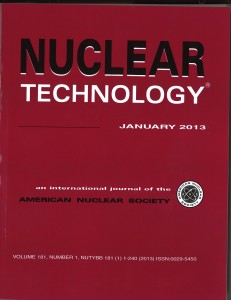 The American Nuclear Society is soliciting names of qualified members who are interested in becoming the editor of the ANS journal Nuclear Technology (NT). Dr. Nicholas Tsoulfanidis, Professor Emeritus of Nuclear Engineering, Missouri University of Science and Technology, has served as editor of NT since June 1997. During his term, Professor Tsoulfanidis has done an outstanding job. He has raised NT's reputation for technical excellence and has kept up a full schedule of publishing monthly issues.
The American Nuclear Society is soliciting names of qualified members who are interested in becoming the editor of the ANS journal Nuclear Technology (NT). Dr. Nicholas Tsoulfanidis, Professor Emeritus of Nuclear Engineering, Missouri University of Science and Technology, has served as editor of NT since June 1997. During his term, Professor Tsoulfanidis has done an outstanding job. He has raised NT's reputation for technical excellence and has kept up a full schedule of publishing monthly issues.
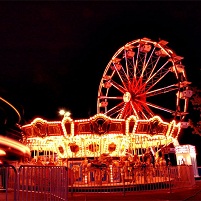 The 148th edition of the Carnival of Nuclear Bloggers is up now at Hiroshima Syndrome. Click here to access the site; the Carnival is at the top of the page.
The 148th edition of the Carnival of Nuclear Bloggers is up now at Hiroshima Syndrome. Click here to access the site; the Carnival is at the top of the page.
The debate over the continuing investigations into steam generator U-tube problems at San Onofre Nuclear Generating Station (SONGS) last week entered a new phase of heightened publicity and public scrutiny as the Nuclear Regulatory Commission (NRC) released Mitsubishi documents which detailed that company's investigations into the root causes of the problems.
Mmmm....Pie.
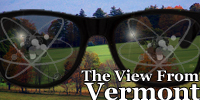 Many people are puzzled by the anti-nuclear movement in Vermont and the world. Those who consider all the evidence often don't understand the opposition. Many issues and accusations are raised against nuclear power by anti-nuclear activists. Trying to understand the root sources of these issues can help in understanding the passion involved.
Many people are puzzled by the anti-nuclear movement in Vermont and the world. Those who consider all the evidence often don't understand the opposition. Many issues and accusations are raised against nuclear power by anti-nuclear activists. Trying to understand the root sources of these issues can help in understanding the passion involved.
On March 11, 2011, a 9.0 earthquake and 40-foot-high tsunami waves hit Fukushima, Japan. The impact on the Fukushima Daiichi nuclear power plant was a call-to-action for members of the American Nuclear Society.
 The 147th edition of the Carnival of Nuclear Bloggers is available now at "Things Worse Than Nuclear Power." Click here to get to this latest edition.
The 147th edition of the Carnival of Nuclear Bloggers is available now at "Things Worse Than Nuclear Power." Click here to get to this latest edition.
At about a quarter to three in the afternoon on March 11, 2011, a gigantic and unprecedented earthquake struck just over 110 miles off the coast of Fukushima Prefecture in Japan. The quake was followed, just over 40 minutes later, by the first of several rounds of tsunami, which inundated enormous areas and eradicated entire towns and villages. Over 19,000 people were killed or are still missing, and over 6,000 survivors were injured.
Don Miley, tour guide at Idaho National Laboratory, takes viewers of this video on a trip to the Experimental Breeder Reactor I (EBR-I). In 1951, the first electricity from nuclear power was generated at EBR-I-using a reactor that actually bred more fuel than it consumed, using an all-plutonium core.
A review of Search for the Ultimate Energy Source: A History of the U.S. Fusion Energy Program, by Stephen O. Dean
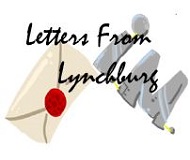 There are many benefits to living in Lynchburg, Virginia. Not only is it a scenically beautiful place with a diverse and growing economy that has continued its steady progress, even during the Great Recession, but it is also a place full of people who appreciate the value of nuclear energy technology.
There are many benefits to living in Lynchburg, Virginia. Not only is it a scenically beautiful place with a diverse and growing economy that has continued its steady progress, even during the Great Recession, but it is also a place full of people who appreciate the value of nuclear energy technology.
 The 146th Edition of the Carnival of Nuclear Energy is up right now at Next Big Future. You can click here to check it out.
The 146th Edition of the Carnival of Nuclear Energy is up right now at Next Big Future. You can click here to check it out.
Taxpayers for Common Sense on February 27 issued a press release targeting the Department of Energy for "wasting more than half a billion dollars" on its small modular reactor (SMR) development cost-sharing program. Leaving aside the historically essential role of government investment in developing, advancing, and bringing to market innovative energy technologies-and the fact that early government investments in nuclear energy technology now pay back enormous dividends to all Americans in billions of dollars' worth of affordable and emission-free electricity generation every year-many of the advantages of advanced SMR energy technologies were overlooked or misconstrued in the group's press release and policy brief.
All forms of electricity generation have their own set of advantages... But among the seemingly endless unique advantages of nuclear fission are the massive implications of the deceptively simple equation E=mc². This translates to unparalleled energy density.
The approach of the second anniversary of the Great East Japan Earthquake of March 2011 finds nuclear energy in Japan at a crossroads. After the quake and resulting tsunami, the nuclear plants in Japan that did not shut down immediately eventually all had to shut down for their required, scheduled outages. Political pressures, for the most part, prevented any near-term chance of any of them restarting, it seemed at the time. When Tomari Unit 3 shut down in May 2012, Japan found itself with not one single operating nuclear power plant for the first time in decades. Since that time, only two nuclear units have restarted-Ohi Units 3 and 4 in July 2012. Other plants, rumored to be "next" to start up, have still not started up, although they may soon. The question that springs to mind is naturally, "When will the majority of the plants be allowed to restart?" The more insightful question, though, is, "What will have to be done in order to allow any plant to restart?" And how can we tell which will start first-is there any clue present now? Yes, there is.
 Refueling optimism
Refueling optimism
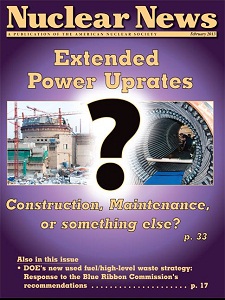 The February issue of Nuclear News magazine is available in hard copy and electronically for American Nuclear Society members (click 'ANS Members' or 'Subscribers' in left column). Don't let a month go by without your Nuclear News!
The February issue of Nuclear News magazine is available in hard copy and electronically for American Nuclear Society members (click 'ANS Members' or 'Subscribers' in left column). Don't let a month go by without your Nuclear News!